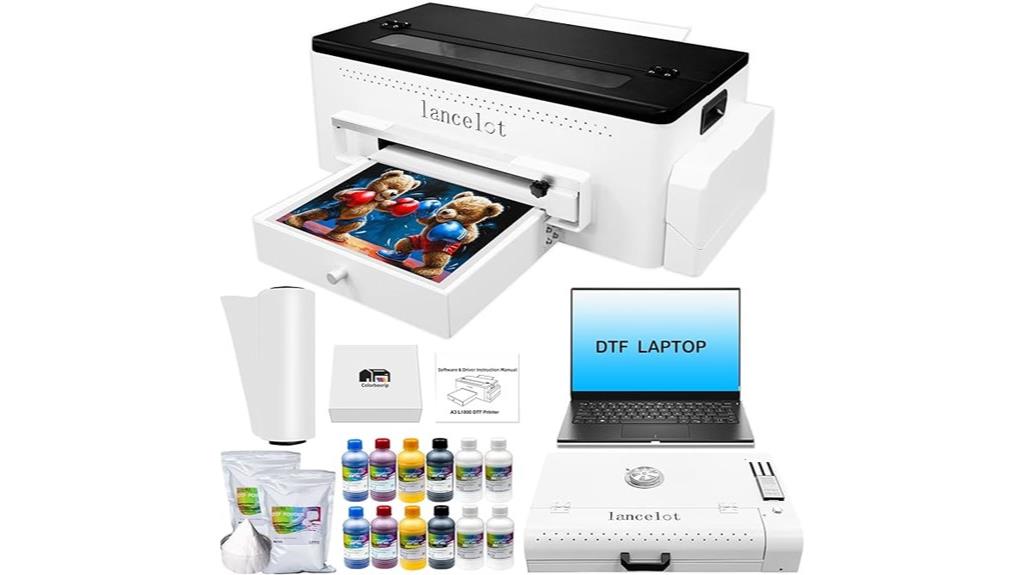I’ve had the chance to explore the Lancelot A3 L1800 DTF Printer, and I must say, it’s an intriguing option for anyone venturing into fabric printing. Its ease of use stands out, especially for beginners. However, there are nuances to evaluate, especially regarding its performance and support. Let’s take a closer look at what makes this printer tick and whether it truly lives up to the hype.
Product Features and Specifications
The Lancelot A3 L1800 DTF Printer stands out with its impressive features and specifications that cater to a variety of printing needs.
Weighing in at 112.8 pounds, it’s a sturdy machine with dimensions of 29.9 x 27.9 x 9.05 inches. This printer uses DTF technology to create vibrant prints on A3-sized media, up to 11.7 x 16.5 inches.
I love the white ink circulation feature, ensuring consistent quality across diverse fabrics like cotton and leather. Plus, it’s beginner-friendly, making setup and operation a breeze.
The included roll feeder minimizes paper jams, enhancing my overall printing experience.
Performance and Print Quality
Performance and print quality are essential when evaluating the Lancelot A3 L1800 DTF Printer.
I’ve found that it delivers high-quality prints with vibrant colors that impress right out of the gate. After initial setup, the results remain consistently great, which is a significant plus for my projects.
The speed is also commendable; a full 12-inch print takes about 15-20 minutes. The curing process is simple with an oven, but I did need to adjust the temperature and time for best results.
Customer Support and Experience
Customer support plays an essential role in my overall experience with the Lancelot A3 L1800 DTF Printer.
From the moment I set it up, I found their team responsive and helpful. Whenever I encountered questions about the initial setup or maintenance, they provided clear guidance through WhatsApp.
It’s reassuring to know I can reach out for assistance whenever needed. I also appreciate the positive feedback from other users about their experiences with support.
Advantages of DTF Printing
While exploring various printing methods, I quickly discovered that DTF printing offers numerous advantages that make it stand out.
First, its versatility allows it to work on a range of fabrics, from cotton to leather, making it perfect for diverse projects.
I also appreciate the vibrant colors and durability of the prints, especially on dark materials.
The beginner-friendly operation simplifies the setup process, and the white ink circulation guarantees consistent quality without pre-treatment.
Plus, the roll feeder minimizes paper jams, enhancing my printing efficiency.
Limitations and Recommendations
Although the Lancelot A3 L1800 DTF printer excels in many areas, it does have some limitations that potential users should consider.
For starters, the documentation can be basic, leading to confusion during setup. I’ve found that the initial learning curve might require some trial and error, but it gets easier with practice.
Additionally, handling curing powder can be messy, so be prepared for that. I recommend setting aside time for practice and familiarizing yourself with the controls.

